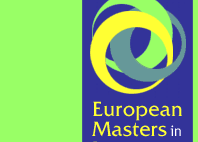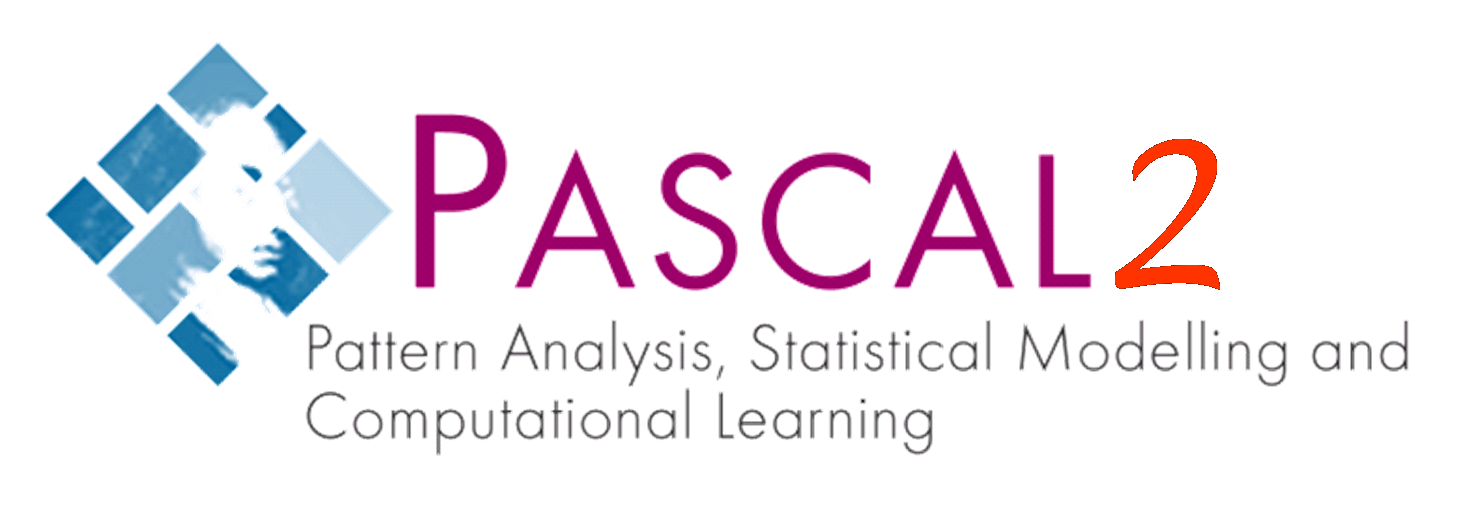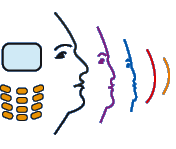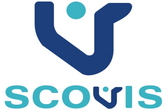Links

|
The European Masters in Language and Speech:The European Masters in Language and Speech presents a flexible and innovative scheme for education and training of students in both Natural Language Processing and Speech Communication Sciences. Students successfully fulfilling the requirements will receive a certificate granted by ISCA and EACL. We welcome students in the areas of Linguistics, Electrical Engineering, Computer Science, Psychology, etc. |
The AMI Consortium project:The The AMI Consortium project is an overarching community of research partners and associated organizations united by a common vision. Business productivity, by way of collaboration between and during business meetings, can be dramatically enhanced with the use of advanced signal processing and knowledge management. AMI Consortium targets computer enhanced multi-modal interaction in the context of meetings. The project aims at substantially advancing the state-of-the-art, within important underpinning technologies (such as human-human communication modeling, speech recognition, computer vision, multimedia indexing and retrieval). It will also produce tools for off-line and on-line browsing of multi-modal meeting data, including meeting structure analysis and summarizing functions. The project also makes recorded and annotated multimodal meeting data widely available for the European research community, thereby contributing to the research infrastructure in the field. |

|

|
Cognitive Systems for Cognitive Assistants - CoSy:The main goal of the CoSy Project is to advance the science of cognitive systems through a multi-disciplinary investigation of requirements, design options and trade-offs for human-like, autonomous, integrated, physical (eg., robot) systems, including requirements for architectures,for forms of representation, for perceptual mechanisms, for learning, planning, reasoning and motivation, for action and communication. |
DECISIONS-IN-MOTIONThe research goals of DECISIONS-IN-MOTION is to describe the neural mechanisms used to guide behaviour in complex visual scenes, in which the observer is in motion and navigates to avoid moving objects. Motion-based image segmentation in the visual cortex will be measured, and neural models will be derived that explicitly make use of a hierarchy of sensory areas (low-, mid-, high-level visual areas) to extract meaningful information about the location and motion of objects in the environment. The outputs of these units will feed into a decision-making process that will weight these inputs and relations between these inputs based on utility functions. "DECISIONS-IN-MOTION" will exploit this newly gained knowledge to provide real-time guidance systems for artificial cognitive systems. A final goal will involve the use of neural network models to assist patients with visual impairments (VisGuide). |

|
 |
| The PASCAL network of excellence has created a distributed institute pioneering principled methods of pattern analysis, statistical modeling, and computational learning as core enabling technologies for multimodal interfaces that are capable of natural and seamless interaction with and among individual human users.
|
|
|
Human Expressive Representations of Motion and their Evaluation in Sequences
|
|
|
Self-Configurable Cognitive Video SupervisionScovis will significantly improve the versatility and the performance of the current monitoring systems for security purposes and workflow control in critical infrastructures. SCOVIS supports the automatic detection of a) behaviours, b) workflow violation and c) localization of salient moving or static objects in scenes, monitoring by multiple cameras (static or active).
|
 |
Cognition in small networksFour related projects are proposed, which seek to link cellular components of neural tissue in a first step to an important component of cognitive function. At the level of small networks, two projects investigate the effects of spontaneous activity and of homeostatic plasticity on the variability of evoked response and on the capacity for associative learning. At the level of cognitive function, two projects concern technical solutions for the challenging recognition tasks posed by human social interaction (prosodic signals, emotional facial expressions) and the heuristic algorithms that may mediate such tasks in the human brain. |
 |
Bernstein Collaboration for Computational Neuroscience "Physiology and Imaging"The proposed collaboration aims at combined experimental and theoretical procedure in the registration and interpretation of spatially extended and at the same time spatially highly resolved data of brain activity.
|
NEST pathfinder project cobolCommunication with Emotional Body Language
|
| The aim is to develop tools to describe and measure how we perceive body language and how we express emotions in the way we move our bodies. For this purpose, researchers are collecting data on behaviour and image material and developing methods for synthese and simulation of body language for use in communications technology. They are also investigating how the recently discovered specialized networks of the cerebral cortex, the most important interconnection organ of our nervous system, processes the body's own influences and environmental influences.
|
 |
MOBI - Mobile BiometryMOBIO concept is to develop new mobile services secured by biometric authentication means. Scientific and technical objectives include robust-to-illumination face authentication, robust-to-noise speaker authentication, joint bi-modal authentication, model adaptation and scalability.
|
Transregional Collaborative Research Centre of DFGActive Listening
|
| The aim of the collaborative research centre "The Active Auditory System" of the university of Oldenburg, the university of Magdeburg and the Leibniz Institute for Neurobiology at Magdeburg is to understand the mechanisms underlying auditory stimulus selection under everyday real-life conditions in which we analyze acoustic scenes with ease and are able to separately listen to the sounds from one source in a mixture of sounds originating from various sources.
|
VISIONTRAIN: Computational and Cognitive Vision Systems: A Training European NetworkVISIONTRAIN addresses the problem of understanding vision from both computational and cognitive points of view. The research approach will be based on formal mathematical models and on the thorough experimental validation of these models. Under this framework we intend to reduce the gap that exists today between biological vision (which is by large not yet understood) and computer vision (which is biologically inspired and whose flexibility, robustness, and autonomy remain to be demonstrated). In order to achieve these ambitious goals, 11 academic partners plan to work cooperatively on a number of targeted research objectives: (i) computational theories and methods for low-level vision, (ii) motion understanding from image sequences, (iii) learning and recognition of shapes, objects, and categories, (iv) cognitive modelling of the action of seeing, and (v) functional imaging for observing and modelling brain activity. |

